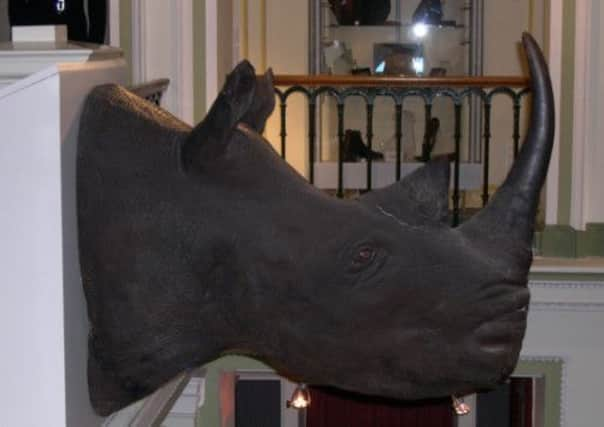Rhino heads worth £400k stolen from Irish museum


Three masked men broke into the National Museum Archives building in Swords on Wednesday night and tied up a security guard before the robbery, which lasted an hour.
Irish police said the three men loaded rhino heads from the building into a large white van.
Advertisement
Hide AdAdvertisement
Hide AdThe security guard, who was uninjured, freed himself and raised the alarm.
The rhino heads had been taken off public display more than a year ago and put into storage after a series of similar thefts from museums and private collections in Europe.
Nigel Monaghan, keeper of the museum’s natural history division, said staff had taken the decision to remove its rhino horn collection from public display in 2011, following several “smash-and-grab” thefts from museums across Europe.
“The stolen rhinoceros heads have a total of eight horns that have probably been taken to supply the illegal trade in powdered horn that is used in traditional medicines in the Far East,” said a statement issued on behalf of the museum. “Their price is based on weight and the total amount stolen could have a street value in the region of €500,000.”
Mr Monaghan said the horns were about 100 years old.
“We’ve never had to deal with something like that in our history, as far as I’m aware,” he said.
The heads included three black rhinos shot in Africa – one from the Masai Mara in Kenya – and a white rhino from Sudan.
A Garda forensic team sealed off the premises to carry out a technical examination and an incident room has been set up at Swords Garda station.
Several species of rhino have been “brought to the edge of extinction” due to poaching in the wild, the statement added. As a result, thieves have begun to target museums and private collections.
Advertisement
Hide AdAdvertisement
Hide AdIn 2011, Europol said it believed an Irish organised crime gang had become one of the most significant players in the illegal global trade in rhino horns.
The international underground collectors’ market for the horns has grown in recent years, with many of them sold for use in traditional Asian medicines.
Earlier this month, Scottish Government scientists announced the launch of a DNA database of every rhino at Britain’s zoos and rhino artefacts held at museums, to help counter the growing threat from armed criminal gangs.
Experts will send DNA sampling kits to museums and zoos to create the rhino database.
Last month, staff at the Elgin Museum in Moray were forced to lock away two rhino heads, after a spate of raids on similar specimens in museums on the continent.
The black and white rhino heads – two of the star exhibits at the museum – have been transferred for safekeeping to the National Museums of Scotland (NMS) in Edinburgh.
An NMS spokesman said: “We are not able to comment on our security procedures.”